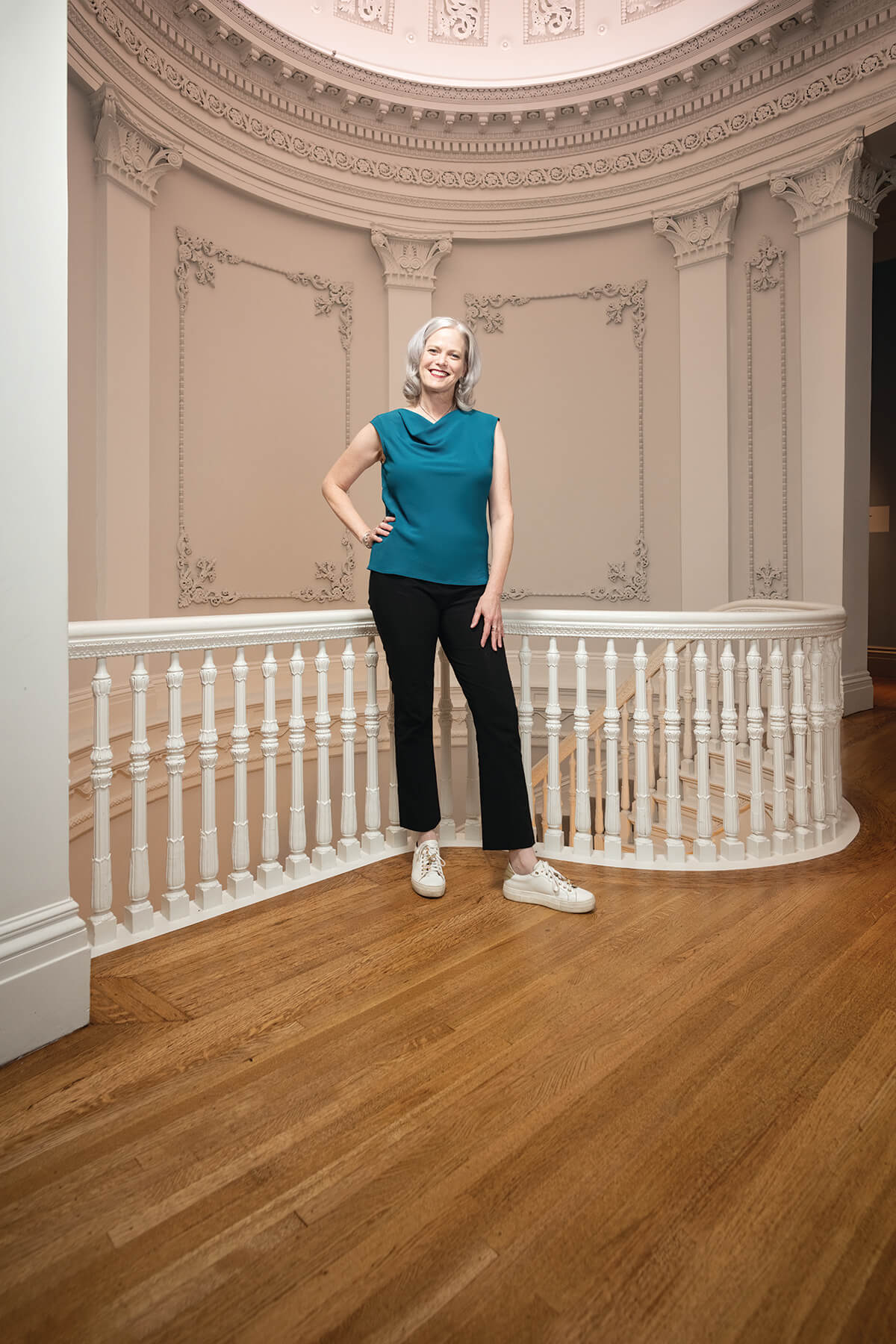Arts & Culture
Our Exit Interview with The Walters’ Outgoing Executive Director Julia Marciari-Alexander
Under her direction, the museum launched innovative exhibits, shed light on the Walters family’s difficult history, navigated through COVID, and unionized its staff—with Marciari-Alexander becoming a pillar of the city’s arts scene along the way.

The search is on. Next month, Julia Marciari-Alexander will step down as executive director of The Walters Art Museum. On the eve of her arrival in 2013, the California native and San Diego Art Museum curator was described to The Sun as an “up-and-comer” with “a gift for making art engaging and accessible to the public.”
Now fast-forward nearly 12 years, as she ends her tenure in September to become president of the New York-based Kress Foundation, Marciari-Alexander leaves behind an impressive era as the first woman to helm the Mount Vernon institution. Under her direction, the museum launched innovative exhibits, shed light on the Walters family’s difficult history, navigated through COVID, and unionized its staff—with Marciari-Alexander becoming a pillar of the city’s arts scene along the way.
What role does The Walters play in the broader arts community?
The Walters has positioned itself as a steadfast leader when it comes to what role art, culture, and museums can play in creating great civic life, and great cities. I also think we have been a leader in being very intentional in building change for the institution, bringing what is a 90-year-old museum into a 21st-century conversation about why art and art museums matter in this moment of seismic societal change.
What are some of the ways you’ve done this within the museum?
We’re finally seeing the result of decades-long work of my predecessor and the preceding boards . . . just thinking differently about how we use the collections that we have to tell stories that are relevant to where we are today. And that work plays itself out in bringing different voices to the table, different ways of seeing and looking and displaying the art, and how we talk about the art, so that we can reveal the ways that humans relate to each other in their present moment, but also see how humans have related to each other through these wonderful objects of human creativity from across the globe and time.
Are there any exhibitions that encapsulate these efforts for you?
One of the biggest achievements was the complete refurbishment of the Hackerman House—looking at buildings not simply as receptacles for art but the largest and most complex objects that we steward. That project was a showcase for looking differently at how we tell the stories. So, telling the story of the [original] owners, who had two enslaved women living there, and then revealing the little history we have of Sybby Grant, the enslaved cook, and then commissioning a contemporary artist to engage in a conversation with a letter that is written by this woman who did basically invisible labor in this house. All of that comes together through art, and you make the invisible visible. How can we understand objects differently when we think about the context in which they are made, used, and handed down?
Do you have any museum favorites?
My current favorite place in the museum is Across Asia. Around my third week of work, I told some donors that I thought the Asian collection should go on the fourth floor, but museum time is like ocean liner time, not speed boat time—and that’s how you make change. I’m a fan of radical incrementalism, because otherwise, you’re just redecorating, and your house still is the same house. But having Across Asia up there just shows these objects in such a different way. . . . You can learn so much in every room, it bears going back over and over, and that’s our goal.
Speaking of radical incrementalism, after a years-long process, employees at The Walters just voted to unionize. How does it feel to be here?
I have always valued putting the employees first and giving them the opportunity to vote for themselves [for or against unionization]. That was the goal the whole time, and I’m so happy that they did that, and that we are on the other side of that, and that we are now collective bargaining. I’m absolutely sure that, if it doesn’t finish with me, it will keep going and come to a good resolution.
Of course, during your tenure, you also had the pleasure of being dressed by Baltimore fashion designer Bishme Cromartie for a few galas. What was that like?
The first time, I was super star struck. He knew that he was going to be on that first Project Runway, but we couldn’t tell anybody, so it felt like I was wearing this giant secret. I really am a such a [big fan]. Not a Swiftie, but a Bishme-ie.
How would you describe the state of the Baltimore arts right now?Baltimore is one of the premier art and cultural scenes in America, if not the premier city for its size. . . . I will say, I think the future needs to be more truly collaborative, not just, “Hey, let’s do things alongside each other.” Museums have changed more in the last 10, maybe 15, certainly five years than the last before then. And that means that what we do and how we do it is ever more important, because if we don’t meet the moment, we are going to become irrelevant. We have the opportunity to create an even richer community relationship within in the ecosystem of the arts and cultural scene here.